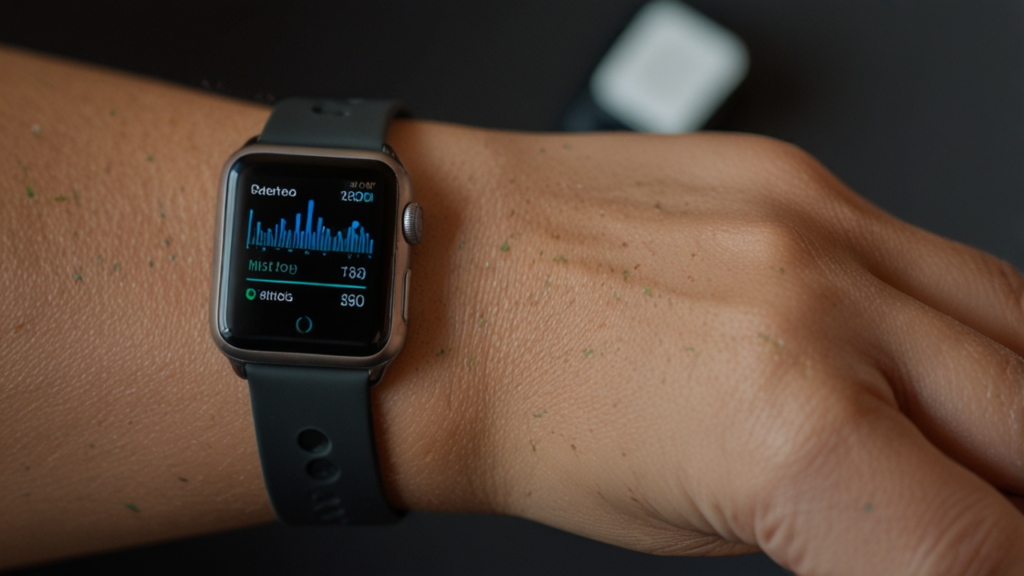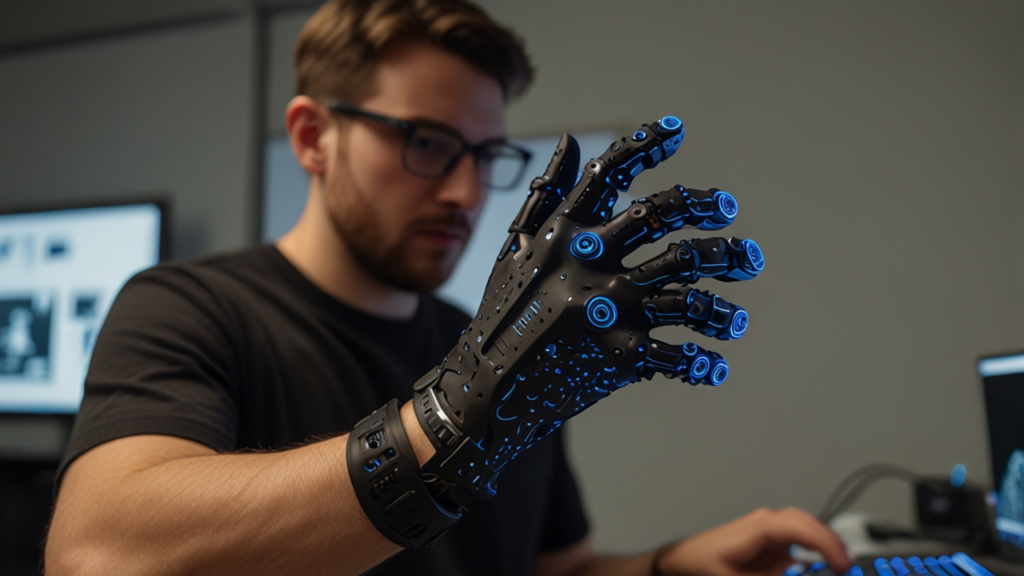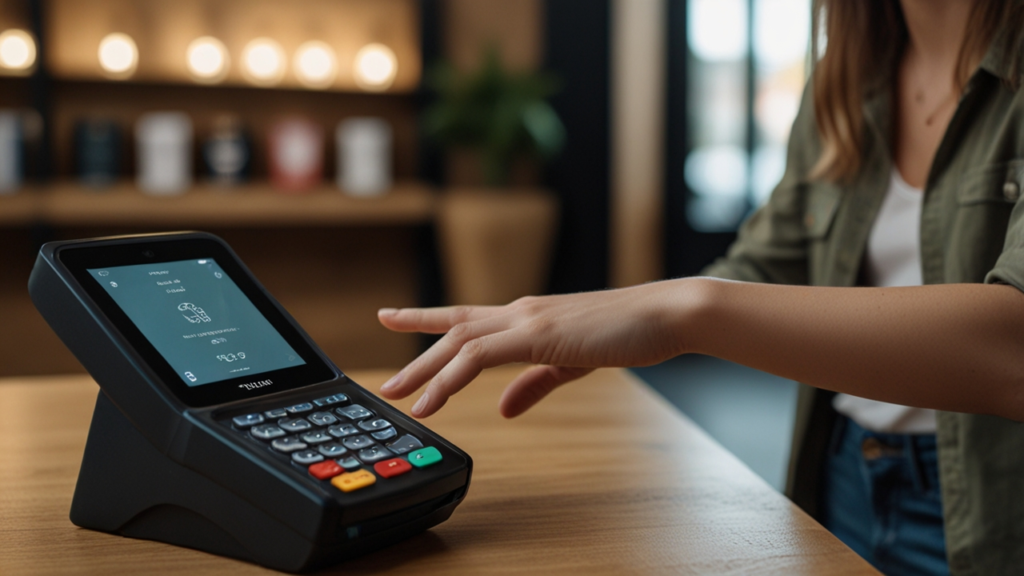Biometric Wearables 3 Essential Functions
Biometric Wearables have transformed from primitive gadgets into highly sophisticated instruments that monitor our health and well-being. Over time, these devices have become essential tools that help individuals track vital statistics, manage personal fitness, and even alert medical professionals during emergencies. Today, they serve as both lifestyle accessories and powerful clinical instruments.
The journey of these devices spans millennia—from ancient practices of fingerprinting for identification to modern, wearable technologies that use complex sensors. Driven by technological innovations and a deeper understanding of human physiology, these devices offer unprecedented insights into individual health. Their role in personal and clinical wellness emphasizes smart integration, continuous monitoring, and personalized feedback.
In this article, we take you on an engaging exploration of Biometric Wearables, their evolution, and the critical functions that make them indispensable. Whether you are a gadget enthusiast or a health-conscious individual, you will find detailed insights and practical examples that illustrate how these devices are reshaping healthcare and everyday life.
Table of Contents
- Introduction to Biometric Wearables
- Evolution and History of Biometric Wearables
- How Body-data Devices Enhance Biometric Wearables
- Physiological Sensors Systems and Their Applications
- Real-World Case Studies of Biometric Wearables
- Health Tracking Technology in Modern Biometric Wearables Solutions
- Future Trends: Biometric Wearables and Beyond
Introduction to Biometric Wearables
Overview and Technological Impact
Artificial Intelligence
Biometric Wearables have become ubiquitous in our daily lives, acting as essential tools for monitoring various aspects of health. These devices combine sensor technologies with real-time data analytics, equipping users to keep track of vital signs without invasive procedures. Their applications range from simple fitness monitoring to complex clinical evaluations. Historically rooted in ancient identification methods such as fingerprinting, their modern iterations employ advanced electronics and software that continuously capture and analyze physiological signals.
Technological impact is evident as sensor miniaturization, extended battery life, and enhanced connectivity allow continuous, real-time monitoring. Advanced sensors, including photoplethysmogram (PPG) and electrocardiogram (ECG), are seamlessly integrated into compact designs. This transformation has paved the way for remote monitoring and personalized healthcare. For more information on the historical evolution of wearable technology, please see detailed study on wearable technology [Condeco]. Have you ever considered how these small devices could revolutionize your personal healthcare routine?
Key Functions and User Benefits
At their core, these devices fulfill three essential functions: continuous monitoring, personalized insights, and early warning systems. Continuous monitoring is achieved via noninvasive sensors that record vital parameters such as heart rate and blood pressure in real time. Personalized insights are generated through sophisticated data processing algorithms, informing users of trends and necessary lifestyle adjustments. Meanwhile, early warning systems alert users to potential medical events, such as arrhythmias or falls, enabling timely medical intervention.
Overall, the integration of these functions has yielded enormous benefits for both the consumer and clinical sectors. The device’s ability to provide constant health insights empowers users to maintain preventive healthcare measures. This holistic approach to health makes these devices invaluable, especially in managing chronic conditions. As you reflect on your daily routines, have you experienced situations where prompt health insights could have made a difference?
Evolution and History of Biometric Wearables
Ancient Beginnings to Modern Innovations
Cutting-Edge Technologies
The history of biometric identification is long and storied. In ancient Babylon, fingerprints were used as signatures as early as 500 BC, while similar practices evolved in China by the 14th century. The late 19th and early 20th centuries witnessed systematic approaches such as anthropometry and fingerprinting becoming standard in law enforcement. These early practices laid the foundation for modern identification techniques, evolving over time with the advent of more accurate and noninvasive methods.
In the 1970s, the introduction of calculator wristwatches paved the way for more advanced wearable devices, while the 1980s saw the patenting of hand geometry and vascular pattern recognition technologies. The explosion of biometric research during the 1990s and 2000s significantly influenced current applications. For further historical details, explore the insights available in academic review on wearable devices [PMC]. Can you imagine how this evolution has shaped the devices you use today?
Milestone Innovations in Wearable Technology
Several milestone innovations have defined the evolution of these devices. Innovations such as the integration of ECG patches and advanced optical sensors have helped transform simple pedometers into sophisticated health tracking tools. By the early 21st century, the healthcare sector fully embraced these technologies, incorporating them into clinical settings to provide real-time monitoring of vital signs.
Industry reports predict that the global Internet of Medical Things (IoMT) market, which includes these devices, may reach $187 billion by 2028 thanks to demand for real-time health data. This shift towards continuous monitoring has resulted in improved early warning systems, powering both personal and clinical health management. Reflect on your own experience: how would access to such real-time health insights change your daily health management?
How Body-data Devices Enhance Biometric Wearables
Smart Devices
Integrating Sensor Technologies and Data Analytics
The integration of body-data devices into wearable technology adds a new level of efficiency and precision in monitoring health parameters. These devices incorporate accelerometers to measure movement and energy expenditure while using PPG technology to assess heart rate, rhythm, and oxygen saturation. With the inclusion of ECG sensors, even the slightest anomalies in electrical heart activity can be detected early. Such devices synergize hardware and software for comprehensive health tracking, making them invaluable for both consumers and clinicians.
Data collected is processed using machine learning algorithms that analyze trends and detect anomalies in vital signs. This integration allows for personalized insights and supports proactive healthcare measures. For additional context, review a detailed timeline of biometric systems [Biometric Update]. Does this new level of integration inspire you to monitor your health more closely?
User-Centric Enhancements and Practical Applications
Body-data devices significantly enhance the overall functionality of wearable technologies by offering continuous, noninvasive monitoring. With improved miniaturization and battery technology, these devices are now capable of being worn continuously, even during sleep. This seamless integration not only monitors daily activity but also provides real-time feedback that can help prevent potential medical emergencies.
The practical applications are far-reaching. If you use a wearable device, you may already be benefiting from personalized insights that inform daily lifestyle choices and help prevent adverse health events. Imagine using a device that alerts you before a serious health event occurs, enhancing your overall quality of life. Have you ever experienced the benefit of timely health feedback that changed your routine?
Physiological Sensors Systems and Their Applications
Wearable Tech
Advanced Sensor Technologies for Health Monitoring
Physiological sensors are at the heart of modern wearable solutions, creating an essential bridge between raw data and actionable insights. Accelerometers, PPG sensors, and ECG electrodes work in tandem to monitor a wide range of vital signs. These sensors are built into everyday gadgets like smartwatches and fitness bands, ensuring that health information is continuously gathered without interrupting daily activities.
Technological advancements have led to the miniaturization of these sensors, resulting in improved battery life and reliable performance even during prolonged use. In turn, this supports comprehensive health monitoring that benefits both individuals and healthcare providers. To delve into the technical specifics, check out a brief history of wearable devices [CELLIANT]. How do these improvements in sensor technology motivate you to consider using such devices?
Applications and Impact on Clinical Practices
The data derived from physiological sensors plays a crucial role in clinical applications. By continuously monitoring key vital parameters, these devices empower early detection of hazardous health events such as arrhythmias or falls. The ability to provide personalized, real-time insights allows medical professionals to tailor interventions effectively, thereby reducing hospitalizations and improving patient outcomes.
For example, the use of ECG features in wearables has enabled early detection of atrial fibrillation, which has been clinically validated with high sensitivity and specificity. Such devices have proven their worth through studies and real-world applications, driving a positive impact on public health. Reflect for a moment: how might continuous monitoring change your perspective on personal health management?
Real-World Case Studies of Biometric Wearables
Innovative Solutions
Successful Global Implementations and Clinical Successes
Numerous case studies underline the transformative impact of these devices in health management. The Apple Watch, for instance, has been instrumental in early atrial fibrillation detection. Clinical studies in the US and Europe have demonstrated its high sensitivity and specificity. Similarly, devices like Fitbit have been integral in large-scale population health studies and corporate wellness programs. These success stories highlight the practical benefits of continuous health monitoring and personalized care.
In nations such as Japan and South Korea, hospitals and research institutions are deploying wearable biosensors to cater to aging populations. This trend not only addresses clinical needs but also supports public health initiatives. You might find it surprising how continuous monitoring has already saved lives. Considering these successes, do you think incorporating such devices into daily life could enhance your overall well-being?
Comprehensive Comparison of Case Studies
| Example | Inspiration | Impact | Region |
|---|---|---|---|
| Apple Watch | ECG Integration | Early arrhythmia detection | Global |
| Fitbit | Activity Tracking | Population health studies | Americas, Europe, Asia |
| Duke Center Sensors | Real-time monitoring | Personalized care pathways | US |
| Wearable Biosensors | Continuous monitoring | Elderly care management | Japan, South Korea |
| ECG Patches | Electrical Activity | Early detection of anomalies | Global |
Have you seen a case study that reflects your own experience with wearable devices?
Challenges and Conflicting Perspectives in Implementation
Despite the widespread adoption of these devices, challenges remain. Privacy concerns have sparked debates, particularly in regions with strict data protection regulations. Additionally, while numerous devices have received clinical validation, some consumer-grade monitors still face criticism regarding false positives or negatives. These challenges emphasize the need for continuous improvement and regulatory harmonization to ensure safe and effective use.
Moreover, issues such as unequal access in low-resource settings may widen health disparities, underscoring the urgency to implement scalable, affordable technologies. For more detailed insights, consider exploring authentic historical data [Thales Group]. Reflecting on this, have you encountered any concerns regarding privacy or accuracy in your use of wearable technology?
Health Tracking Technology in Modern Biometric Wearables Solutions
Innovative Solutions
Real-Time Monitoring and Predictive Insights
Modern solutions in Biometric Wearables integrate real-time health tracking technology with advanced analytics to deliver personalized insights. These devices use sensor data to continuously monitor vital health parameters such as heart rate, blood pressure, sleep quality, and physical activity. Data processing via cloud integration and machine learning algorithms generates predictive insights, alerting users to potential health risks before they become critical.
This proactive approach extends beyond mere data collection—it empowers users with actionable recommendations to improve their health. Furthermore, clinicians can leverage this constant stream of data for timely intervention, drastically reducing emergency room visits and hospitalizations. For a deeper understanding of this evolution, see innovative trends in biometrics [HyperVerge]. Can you envision how proactive health tracking might change your long-term wellness strategy?
Smart Integration with Daily Life and Healthcare Systems
These wearable solutions have become seamlessly integrated into both consumer lifestyles and healthcare systems. By syncing with smartphones and other smart devices, they enable a holistic approach to health management. Real-time alerts and personalized recommendations help users adapt their daily routines based on real-time data, ensuring that their lifestyles align with their health goals.
Moreover, data collected from these devices is often shared with healthcare providers, creating a continuous feedback loop that enhances clinical decision-making. This considerable transformation in patient care bridges the gap between technology and medical expertise. Reflect on your current habits—how could a continuous health tracking system improve your daily routine and healthcare management?
Future Trends: Biometric Wearables and Beyond
Emerging Trends and Technological Innovations
The future of Biometric Wearables looks promising as emerging trends suggest even greater integration of touchless biometrics and multimodal systems. Innovations such as facial and iris recognition are poised to provide seamless authentication while simultaneously monitoring health. These advancements are complemented by the expansion of behavioral and emotional sensing, which could soon enable comprehensive mental health monitoring through the fusion of physiological data and behavioral analytics.
In addition, ongoing research and development will likely result in continuous multi-biomarker monitoring solutions that leverage AI-driven predictive analytics to enhance early warning systems. These innovations will further integrate wearable devices into everyday life, making them indispensable tools across various sectors, from healthcare to finance. When you think about these developments, how do you see them impacting your approach to proactive health management?
Sustainable Growth and Global Adoption Prospects
The global market for Biometric Wearables is expected to continue expanding, especially with rapid adoption in Asia-Pacific regions driven by aging populations and advanced technology infrastructure. Regulatory harmonization efforts around data privacy and clinical validation are set to create an environment that supports cross-border adoption and innovation. As these devices become more affordable and accessible, their practical impact on public health will likely be profound.
This shift is not only transforming personal health routines but also significantly influencing healthcare policy and industry standards worldwide. With continued investment in both consumer-driven and clinical-grade technologies, the future looks bright for integrated health monitoring solutions. How do you anticipate these global trends shaping your region’s approach to health monitoring?
Biometric Wearables Insight Spotlight
This section encapsulates a unique perspective on the journey of wearable tracking instruments over time. It starts with early prototypes that measured basic bodily metrics and grows into an era where tiny, unobtrusive devices continuously capture data with great accuracy. The evolution of these devices stems from a history marked by gradual integration of advanced sensors, smarter connectivity, and ever-improving data analytics. A key insight is the role that cross-industry innovation has played, blending ideas from medical research, consumer electronics, and artificial intelligence to create truly integrated solutions.
The spotlight here highlights a surprising connection between early identification methods and today’s robust monitoring systems. Observations from pioneering case studies and clinical trials point to a future where personalized alerts and predictive health insights become standard. As the design and function of these systems evolve, they will likely impact daily routines by offering more proactive care. This transformative journey suggests that tomorrow’s devices might predict health fluctuations even before symptoms arise, setting the stage for a preventive approach that reshapes our interaction with technology. The synergy of innovation and practicality promises a future where our well-being is continually safeguarded by unobtrusive, reliable systems.
This narrative invites you to explore how early challenges have spurred a wave of creative solutions, paving the way for a future where every individual can enjoy a personalized, responsive experience in health monitoring.
FAQ
What are Biometric Wearables?
Biometric Wearables are devices that integrate sensors and data analytics to monitor various health parameters in real time. They are used for personal wellness and clinical diagnostics, providing continuous tracking and personalized insights.
How have these devices evolved over time?
They have evolved from simple timekeeping devices and basic identification systems to complex, sensor-rich gadgets. Early methods such as fingerprinting laid the groundwork, while current devices use advanced techniques like ECG, PPG, and AI-driven analytics.
What benefits do these devices offer?
They provide continuous health monitoring, personalized insights based on real-time data, and early warning systems for potential health issues, thereby improving overall well-being and facilitating proactive healthcare.
Are there challenges related to privacy and accuracy?
Yes, privacy concerns and issues with false positives/negatives are among the challenges. However, ongoing developments in data security and regulatory harmonization aim to address these challenges while ensuring improved accuracy.
What does the future hold for these devices?
The future includes advancements such as touchless biometrics, more integrated sensor systems, and broader adoption globally. Innovations are expected to drive even more personalized and predictive health monitoring solutions.
Conclusion
Biometric Wearables continue to change the landscape of personal health and clinical care. Their evolution from ancient identification methods to today’s sensor-rich devices illustrates a remarkable journey of technological innovation and human ingenuity. As you explore these advancements, remember that every smart decision regarding your health begins with continuous awareness and timely intervention.
For more information, do check out our detailed Mobile & Gadgets resources, and feel free to share your thoughts or experiences. Have you experienced the benefits of real-time health monitoring? If you have any questions or need further guidance, please Contact us today.



